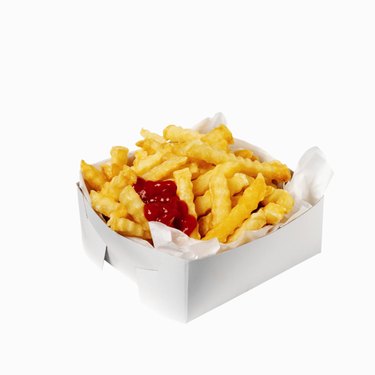Things You'll Need
Ketchup
Clean cloth
Microfiber cloth
White vinegar
Bowl

Commercial brass polishers may fill you with relief and enthusiasm – until the white residue they often leave behind makes your brass piece look like a candidate for a "got milk" advertisement. Physical effort and a microfiber cloth often removes light traces of white residue but the more resilient form requires a different strategy.
Step 1
Squirt a dollop of ketchup on a clean cloth. Spread it over the white residue left behind on the brass piece.
Video of the Day
Step 2
Remove the ketchup with another section of the same cloth or a new cloth. Buff the brass piece in circular motions with a microfiber cloth until it shines.
Step 3
Add white vinegar to ketchup to remove stubborn white residue that has settled overnight or has been exposed to sunlight. Mix a 2-to-1 ratio of ketchup to white distilled vinegar in a bowl. Rub the mixture onto the brass piece with a clean cloth, remove it, then buff it with a microfiber cloth.
Tip
To prevent a buildup of white residue, follow the directions exactly on your commercial brass cleaner. Using too much can contribute to a stubborn buildup.
Follow the manufacturer's instructions regarding the proper temperature range in which to apply the brass cleaner.
Apply commercial brass cleaner in a well-ventilated area.
Determine if your brass piece is solid or plated by pressing a magnet against it. If the magnet falls away, your brass piece is solid; if the magnet pulls, the piece is plated brass, meaning is has another metal underneath.
Warning
Never use abrasive or sharp cleaning tools on brass or you risk marring the surface.
Video of the Day